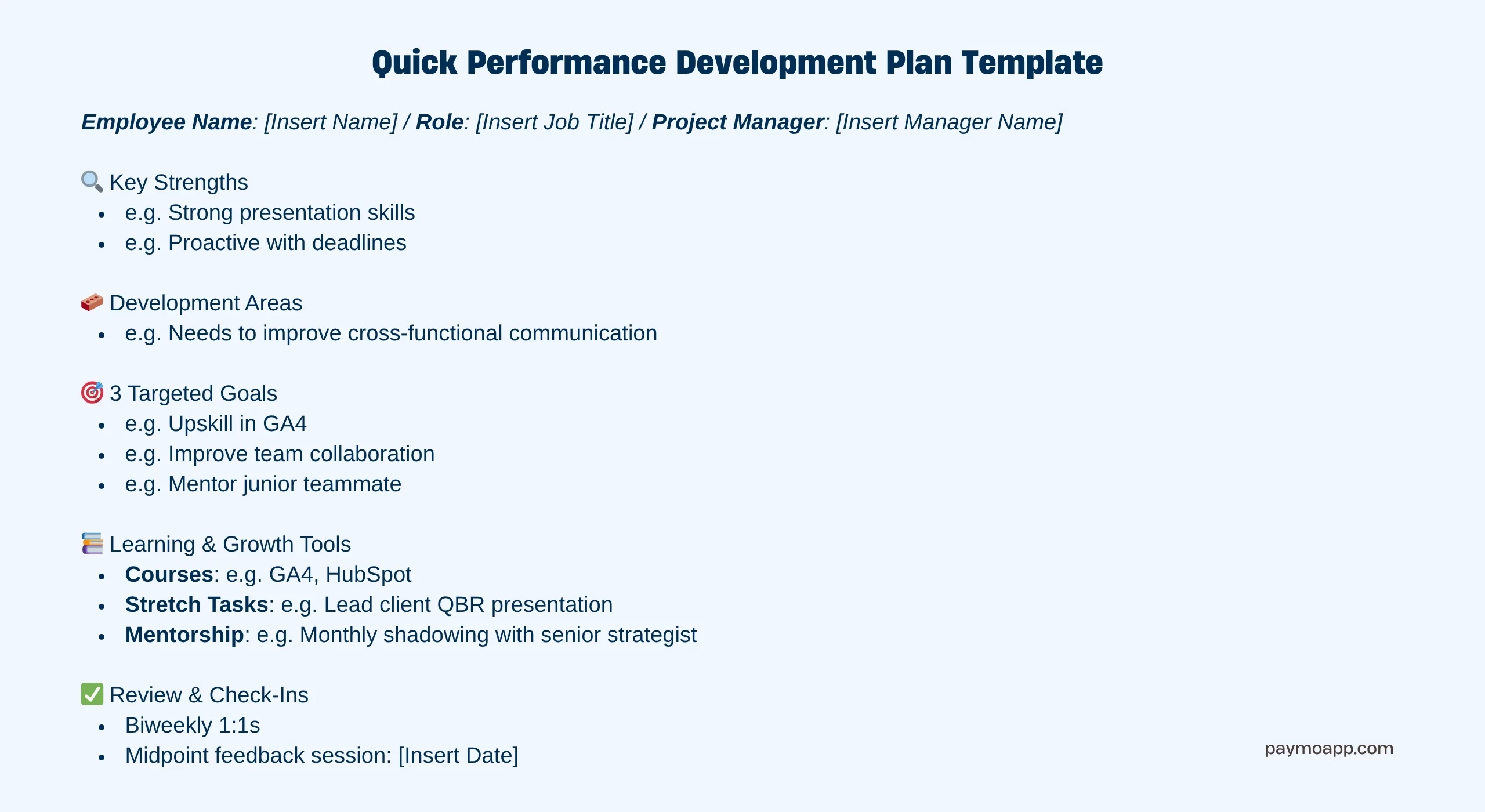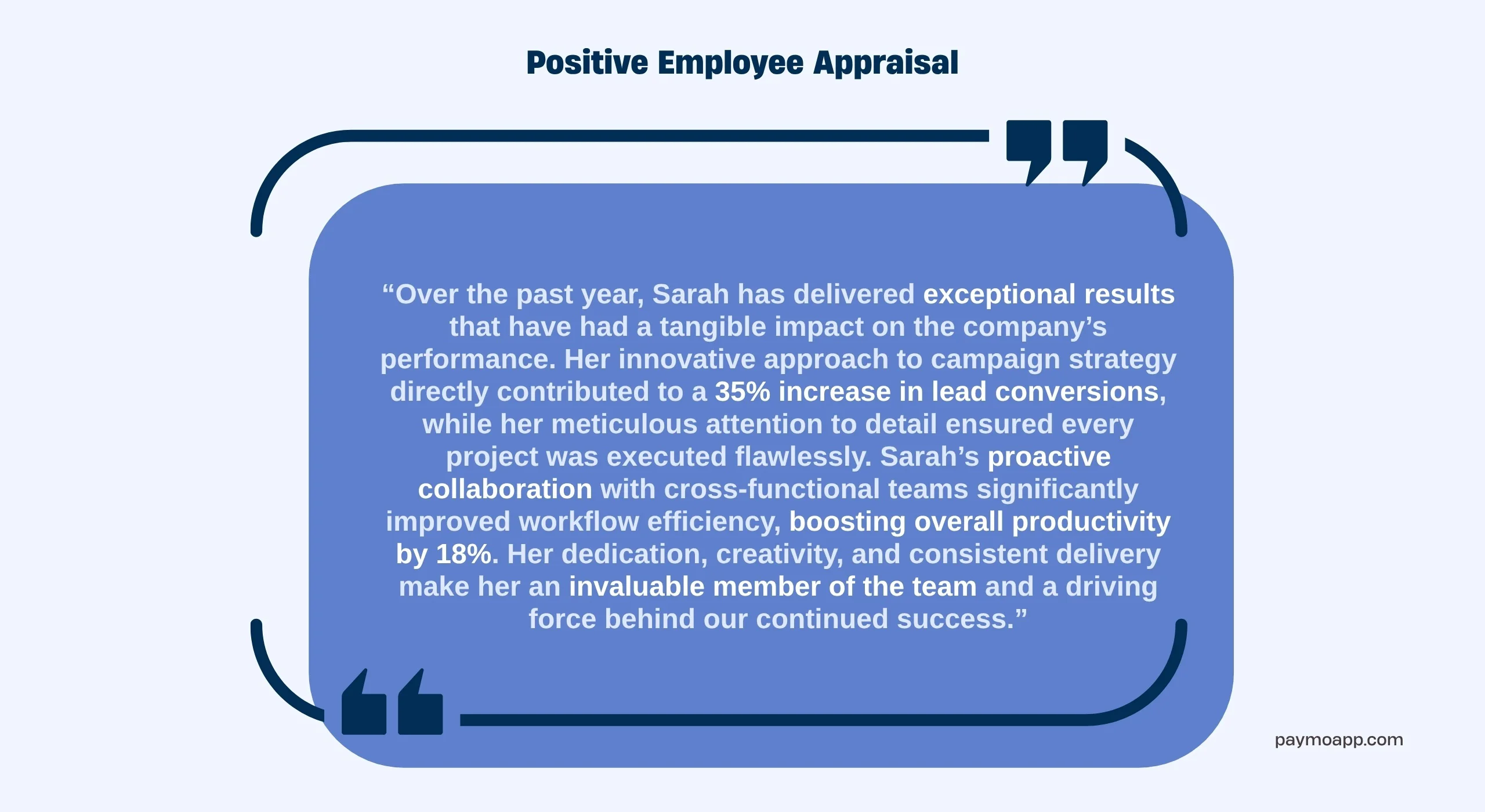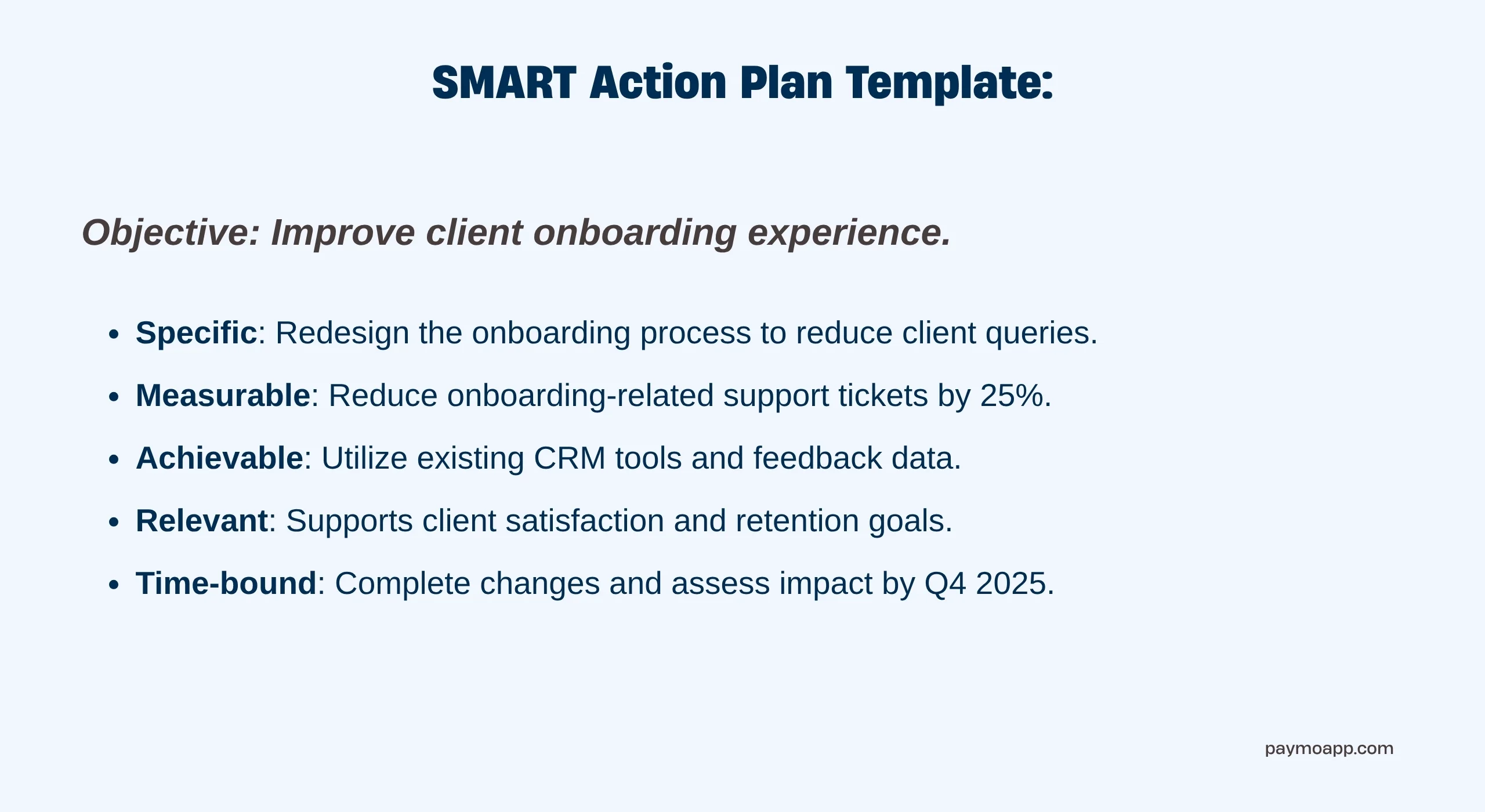Is your business motivating its workforce?
Employee appraisals are becoming increasingly important in the business world. For HR teams and project managers alike, motivating your team from the ground up is key to maintaining high productivity levels and low employee turnover.
In fact, according to experts at McKinsey, 60% of companies with an effective performance management system in place regularly outperform their competitors.
The key here is to get your appraisal strategy just right. Not all performance reviews are favourable; however, shaping your appraisal process to inspire employees rather than demotivate them could fetch you a higher success rate.
With this in mind, I’ve put together a guide on how to improve your employee appraisal strategy to improve team performance and inspire motivation from all angles.
The psychological impact of employee appraisals
Employee appraisals are a type of feedback that informs workers about their performance within the company. Many project managers, HR teams, and business leaders utilize employee appraisals to guide and inspire their employees to improve in the workplace.
While this process can help teach a team how to complete projects to the best standard possible, this feedback can also have adverse physiological effects when delivered inappropriately.
Appraisal feedback often influences how an employee perceives themselves and their performance at work. While most employee appraisals are more positive than negative, it’s crucial to strike a balance when criticizing any behaviors or an employee’s approach to their role. Opting for a constructive approach to criticism helps an employee feel recognized and motivated while still receiving notes for improvement. An employer recognition platform can help systematize the process.
In fact, according to experts at Harvard Business Review,
“Negative feedback often doesn’t result in performance improvement unless it’s delivered constructively, emphasizing potential growth.”
To combat this, leaders must align their appraisal approach with these principles, particularly if they aim to improve team morale and motivation.
The key here is to figure out what motivates your employees and incorporate positive reinforcement into your feedback strategy.
So, I’ve put together a list of common pitfalls to avoid as a project manager and three motivational tips to include in your next employee appraisal.
How to avoid common appraisal pitfalls as a project manager
As a project manager, it’s your job to motivate your team, keep them focused, and guide them in the right direction. This is why it is common to find yourself in the dreaded appraisal meeting room alongside HR at that tricky time of the month, when you provide feedback to your employees on their performance.
This said, the appraisal process doesn’t have to be so bad if you avoid these common feedback pitfalls:
1. Discard any bias before the review
We’re all human, and we all have a natural tendency to favor team members. However, this bias should not affect your appraisal process in any way. While you might get on well with your colleagues, favouritism should not influence your feedback on their performance. Instead, stick to performance-based statistics and evaluate each member of your team on their approach to their work rather than their personality.
2. Avoid the Annual Review Trap
It’s no secret that infrequent feedback leads to disengagement. According to Gallup Research, employees are 3.6 times more motivated when receiving frequent feedback on their performance.
The key here is to ditch long-form yearly reviews and set up frequent, short-form appraisals that keep your team in the loop.
3. Don’t overemphasise weaknesses
As a project manager, your goal is to motivate your employees. Overemphasising their weaknesses will achieve the opposite. Employees like to be recognised for their hard work and should be praised for the things they are doing well.
While criticism is inevitable during a feedback session, ensure that the comments you make are constructive and followed up by something positive.
4. Ensure your feedback is actionable
A lack of actionable feedback often leaves employees feeling frustrated. Less than 20% of workers feel inspired by their reviews, so it’s vital to provide step-by-step feedback that’s easy for employees to implement in their work for the best results.
Following these tips, you can avoid the common HR pitfalls during the appraisal process and improve your feedback approach.
5 Motivational strategies for effective employee appraisals
Now that we’ve covered the strategies to avoid during the appraisal process, let’s delve deeper into some of the best ways to enhance your employee appraisal to encourage team-wide motivation.
1. Preparation is key
Prepare well for your employee appraisal to achieve the best results. This includes arranging a private meeting in advance, reviewing the process beforehand, and ensuring that the employee is issued a self-appraisal form prior to the session.
Additionally, integrating modern technologies like artificial intelligence and machine learning development into your appraisal process can help streamline feedback delivery and ensure more objective and accurate results.
If you’re managing a large team, we recommend investing in reliable HR software that can automate meeting booking and resource scheduling, send reminders, manage any necessary forms, as well as block off your schedule ahead of time.
With more time to prepare for your appraisal, why not also craft a personalised development plan? Each employee engages in different tasks, so a one-size-fits-all approach often fails to scratch the surface. Instead, create a customised performance plan for your worker, full of personalised, actionable insights related to their specific role in the company – a step that reinforces your commitment to employee development and encourages a learning culture within your team.

Take a look at this performance development plan template. The key to creating a powerful development plan for your employees is to focus on 1-3 performance goals at a time that are personalised based on an individual’s growth journey within the company.
Create a development plan that is easy for both you and your employee to follow, including clear links to learning tools, courses, and mentorship contacts that employees can utilize while working towards their goals and snag that promotion.
2. Highlight employee achievements
Highlighting employee achievements should play a significant role in a successful employee appraisal. To motivate your workforce effectively, you must utilise praise and recognition to drive long-term productivity.
In an employee appraisal, there are several ways to highlight achievements and boost morale in a one-on-one setting.
These include:
- Highlighting specific accomplishments that have directly contributed to company success
- Celebrating your employee’s efficacy and worth to the company
- Emphasising your employee’s meaningful contributions to the team
- Using motivational language such as ‘exceptional’ and ‘proactive’ when illustrating an employee’s appraisal
For example, a positive employee appraisal could look a little bit like this:

As you can see here, the employee has been praised for their contribution to the company, and their individual achievements have been showcased in the appraisal, such as their “35% increase in lead conversions”.
Seeing their achievements in front of them is a key motivator for employees in the workplace. This is why it is crucial to include positives in all appraisals to foster a productive workforce.
3. Incorporate the 7 drivers of employee engagement
One of the most effective ways to encourage motivation among your employees is to incorporate the seven drivers of employee engagement into your discussions.
These include:
- Clarity: Is your feedback clear?
- Freedom: Can your employee make their own decisions?
- Growth: What opportunities are there for growth?
- Challenge: Is your employee’s role relevant? Does it challenge them?
- Recognition: Are you regularly praising your employees?
- Voice: Are your employees’ opinions respected?
- Togetherness: Do you foster trust within your team?
Drawing on any of these seven principles can help you craft an appraisal session that makes an employee feel heard, respected, and valued as a member of your team.
Take Adobe, for example. They replaced their annual appraisals with regular check-in conversations in an attempt to foster an ongoing dialogue between project managers and employees.
Drawing on the seven drivers of employee engagement, they focus on challenging their employees in these conversations, discussing opportunities for growth, and regularly praising in-house achievements.
In response, Adobe’s check-in model has improved project-manager-employee relationships and communication, in turn reducing voluntary turnover by 30%.
4. Ensure objectives are SMART
Specific, measurable, achievable, realistic, and time-bound. Ensure the employee is in agreement with all of these points before finalising the objective, as they may have a different perspective.
Objectives should also be aligned with the overall business goals, so that employees can see where they fit into the ‘bigger picture’ and understand how they can make a positive contribution.
Consider taking copies of your own personal objectives, team goals, and business priorities over the coming months and years so they can be considered as part of the objective-setting process.
With this in mind, use SMART objectives to create an action plan for your employees that can be handed to them and explained during the appraisal.

The template above is based on SMART-inspired action planning. This action plan directly addresses the area for improvement and highlights an objective that employees can work towards.
Including measurable elements and a time frame to work towards provides a structure for the worker and motivates them to be more productive within the workplace.
5. Allow your employees to bring their own discussion to the table
Lastly, let’s talk about your employee’s role in their own appraisal. If you’re able to ask them to prepare a statement ahead of time, ensure that a section of the appraisal provides time for your colleague to review their own performance, discuss concerns, and offer their own suggestions for growth.
A positive feedback session should be a two-way street between you and your employee. This is also their chance to review your performance as their manager, so it’s only fair that you give them the opportunity to feel heard.
Take Google, for example. As a company, they prioritise the voices of their employees, allowing them to bring their own concerns to the table ahead of the appraisal process.
Utilising an ‘Upward Feedback Survey’, Google gathers employee feedback on their managers, which gives workers the chance to express any concerns they have anonymously.
This positions managers and employees on an equal playing field, ensuring that every voice is heard, respected, and instrumental in the company’s growth.
Wrapping up
The psychological impact of employee appraisals is often overlooked, yet it can have a profound effect on a worker’s productivity and overall well-being in the workplace.
Businesses should reconsider their appraisal systems if they struggle to inspire motivation in their employees.
As a project manager, your role is to build trusting relationships with your employees and maintain a highly engaged workforce. The key to success is frequently checking in with your team members, offering regular feedback, and creating an open space for conversations about growth and development within your team.

Rebecca Barnatt-Smith
Author
Rebecca is a marketing expert at Solvid Digital. She specializes in small business strategy and has written for a number of large marketing and business publications such as Envato and Maddyness.

Alexandra Martin
Editor
Drawing from a background in cognitive linguistics and armed with 10+ years of content writing experience, Alexandra Martin combines her expertise with a newfound interest in productivity and project management. In her spare time, she dabbles in all things creative.

